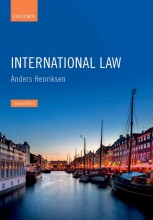Summary: Introduction To International And European Union Law
- This + 400k other summaries
- A unique study and practice tool
- Never study anything twice again
- Get the grades you hope for
- 100% sure, 100% understanding
Read the summary and the most important questions on Introduction to International and European Union Law
-
1 Week 1
-
1.1 Henriksen: Hoofdstuk 1
This is a preview. There are 17 more flashcards available for chapter 1.1
Show more cards here -
The development of modern international law.The late middle ages 15th & 16th century
The late middle ages international law was invented in Europe. There were different levels of international rights and duties such as the allegiances of knights or merchants and the universal political and religious forces of the Holy Roman Empire and the Catholic Church -
What is the origin of the European Union?
1957: creation of European Economic Community (EEC) and Euratom (cooperation with nuclear energy) for establishing better economic international cooperation. In the following years, more and more countries came to join the communities.
1985: the Schengen Agreement paved the way for open borders and free travel within the European community.
1993: the Maastricht Treaty formally established the European Union. -
The development of modern international law.Jus gentium
Roman customary law. The law between the nations. Jus gentium formed the foundation on which international law built -
The development of modern international law.Jus naturale
Natural law. Itprevailed over jusgentium in the latemiddle ages .
Jus naturale focuses on the individual and his relationship to the world.
It applied to everyone, including the emperors and kings. -
What are the four characteristics of international law of coexistence?
- international law of coexistence contains answers to separate powers of sovereign states to uphold peaceful coexistence
- Horizontal in that it focuses on the way sovereign states interact with each other
- Not concerned with bringing states closer together
- The goal of international law of coexistence is that states reach their individual goals without infringing on other state's sovereignty. -
The development of modern international law.The peace of Westphalia 1648
The start of the international legal system. It brought an end to the 30 years war and consisted of the Peace of Munster, the Treaty of Munster and the Treaty of Osnabruck.
The goal of the Peace of Westphalia was to create order and structure in the disorderly European World. -
What is the relationship between national and international law?
International law is always superior. International law is therefore not concerned how a state lives up to its international obligations, only if they do it. -
In which two ways is international law applied within a state?
Monism: There is no separation between international and national law. International law can be applied directly into national law.
Dualism: International and national law operate independently from each other. -
The development of modern international law.Who is Jean Bodin?
Jean Bodin was a french lawyer who developed the theory of sovereignty. The sovereign ruler would be bound by nothing and no one. It also had absolute power.
Thomas Hobbes and John Locke followed his ideas -
What is the issue with enforcing international law?
There is no central organ which does so. Mostly individual states have to resolve issues amongst themselves. It is because of this that states get rewarded royally if they uphold international law, instead of abandoning it.
- Higher grades + faster learning
- Never study anything twice
- 100% sure, 100% understanding
































